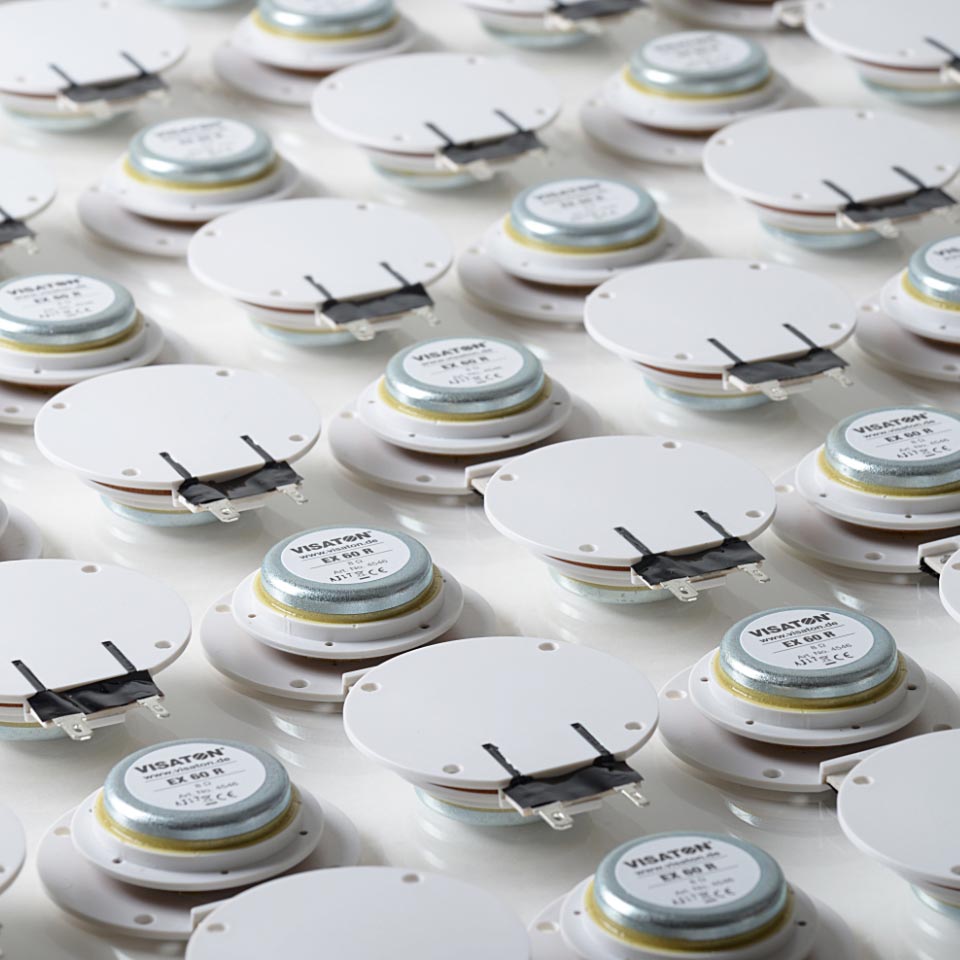These are so taken-for-granted, we hardly even notice them – loudspeakers in buses, underground trains and trams are very popular products. They have to withstand a lot, and the announcements and warning signals should be clearly recognisable. VISATON offers a wide range of solutions to ensure that they are as unobtrusive as possible.
Around 10.4 billion passengers used local public transport in Germany alone in 2019 – commuting to work, visiting friends or exploring a town as tourists. For all these people, loudspeaker announcements are considered standard but are also important. What is the next stop? Where does the journey end? Where can I change to a different line? For people with visual impairments, this information and the signal tones when the door is closed have even greater significance.
Jens-Uwe Hahn, Head of Technology at VISATON, is familiar with loudspeakers in local transport and adds another possible application: "There are smaller stops where there is no public address system at all. That's why sometimes there are also speakers on the outside of the vehicle." VISATON has been offering solutions for all these applications in the passenger area and for public address in the driver's cab for years. This includes a wide variety of loudspeakers ranging in size from a few centimetres to classic full-range speakers.

„Our customers are international manufacturers that are mainly based in Europe.“
Jens-Uwe Hahn, Head of Technology at VISATON
Specially adapted standard products
The requirements for acoustic products in public transport are quite clear: the loudspeakers must have a long life, take up little space and be protected against dirt and vandalism. In terms of expenditure, the options are limited. "Public enterprises are bound by clearly defined limits when it comes to expenditure. That is something our customers – the vehicle manufacturers or suppliers – have to pay attention to," explains Hahn.
A glance at the acoustic conditions shows the challenge for the sound experts. Since the requirements are mainly for speech reproduction, that is, a limited frequency range, VISATON employs full-range loudspeakers as standard – both in buses and in rail vehicles. But there is rarely a standard solution when it comes to installation, because bus and rail vehicle manufacturers install the speakers in a wide variety of models and designs. Adjustments and accurate measurements are often required in order to meet the specified sound pressure level for certain frequencies.




Avoiding acoustic short circuits
If an announcement sounds rather thin, there can be a number of reasons. Then Jens-Uwe Hahn and his colleagues are called in by the customer. One example from the bus sector illustrates this: "A customer ordered our loudspeakers and installed them behind panelling. This also included plans for the cut-outs for the loudspeakers to pass the sound through into the cab. Unfortunately, the cut-out was oval and protruded beyond the extent of the circular speaker. This prevented the sound pressure from building up." The earlier the experts at VISATON get involved, the easier it is to avoid such installation errors. Indeed, according to Hahn, many customers have started planning for the acoustics far earlier: "Especially developers in the rail sector, there are now very precise requirement profiles, which means they are dealing with the issue of acoustics at a really early stage."
One of the key wishes on the customer side is robustness. In VISATON's range of more than 200 products, there is an increasing number of structure-borne sound converters, also known as exciters. These flat, diaphragmless models that are only a few centimetres thick can be mounted directly behind the wall panelling without cut-outs for the sound. They make the entire surface vibrate and turn it into one large loudspeaker. "And that has two big advantages. The designers are pleased about the small dimensions and the fact that the speakers are invisible. And on the inside, an exciter offers more protection against vandalism," explains Hahn. They are typically used for the door signals on trams and underground trains. The acoustic warning sounds as the doors close come from the same wall that the lights are integrated in.




International requirements
VISATON loudspeakers provide passengers with clear announcements and signals not only in this country. "Our customers are international manufacturers that are mainly based in Europe", explains Uwe Hahn. This also means that each country has its own specifics and standards. "Sometimes we install the same outdoor loudspeaker in Switzerland as in Germany, but we have to use different cables in each case. Those are the regulations. But that is all in a day's work for us," says Hahn with pride. To ensure that every VISATON loudspeaker used in public transport environments gets the maximum benefit from the structural conditions, no less than six dedicated development engineers will have been involved. Now all the passengers will be able to understand loud and clear.
VISATON takes into account the most important applicable standards to ensure safe operation for all customers who install loudspeakers. This includes all the requirements relating to jolts, vibrations, fog, salt and fire. The products are designed to comply with the following standards:
- EN 45545 material testing standard for fire protection in rail vehicles,
- EN 50155, which regulates all the details to ensure the functionality of the electronics on a train.
Exciters, also called structure-borne sound converters, are loudspeakers that do not have a vibrating diaphragm. Instead of the diaphragm they have a small mounting plate which is attached to a surface to be stimulated. That surface can be a partition, ceiling or any other surface – the only condition is that it must be large enough and capable of vibrating, because the larger the panel, the better the low-frequency reproduction. Since the sound emitted by exciters is equally strong in both directions, they can easily be mounted on the back of a wall. Thanks to their concealed mounting, exciters are protected from a wide range of influences and are at the same time invisible – a key feature as far as designers are concerned. The higher price compared to broadband and coaxial loudspeakers can pay off because of these characteristics, especially in the public transport sector.
